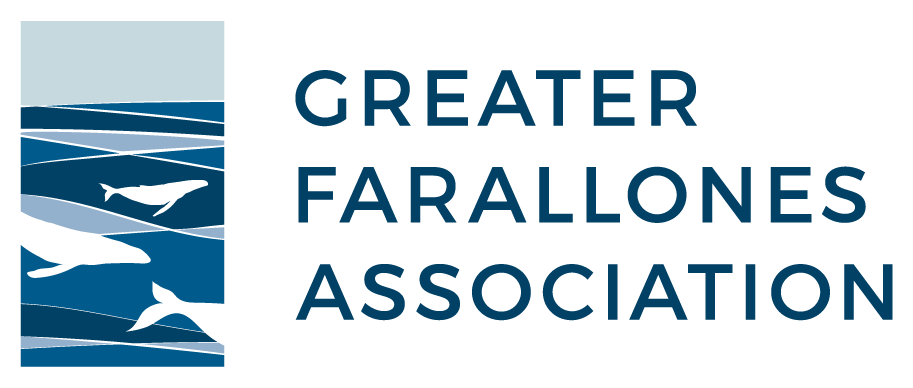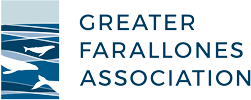A Lesson in Fouling: Q&A with Julia Currier, Marine Science Educator
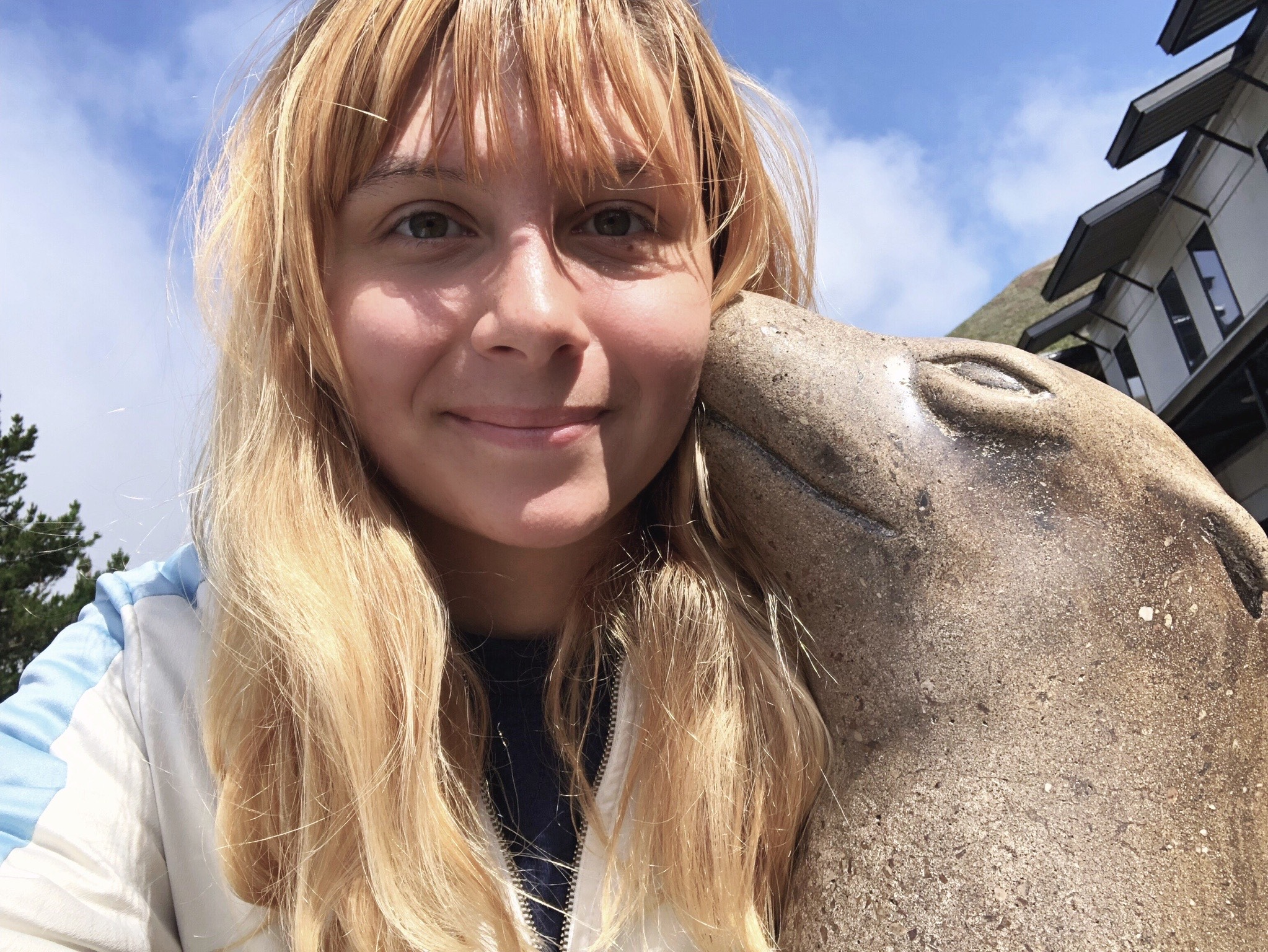
After coming to GFA as the Fall 2022 Marine Science Education Fellow, Julia Currier now serves as a Marine Science Educator and NOAA Affiliate at Greater Farallones Association. When she’s not only educating and inspiring the next generation of marine stewards, Julia is a student at San Francisco State University where she is studying Biology with a concentration in Zoology.
As part of a Marine Invertebrate Zoology course, Julia is currently completing a project wherein students are asked to construct and suspend a panel that is textured with super-glued Legos (yes, Legos!) in a water column to create a fouling community. Fouling communities are communities of marine organisms that aggregate on (often) artificial surfaces like the sides of boats, docks, and seawalls. Mussels, sea anemones, and sponges are a few common species found within fouling communities.
Julia chose to suspend her fouling panel from the pier in front of our Crissy Field offices along the San Francisco Bay. We chatted with her to learn about the assignment and to hear about what she found.
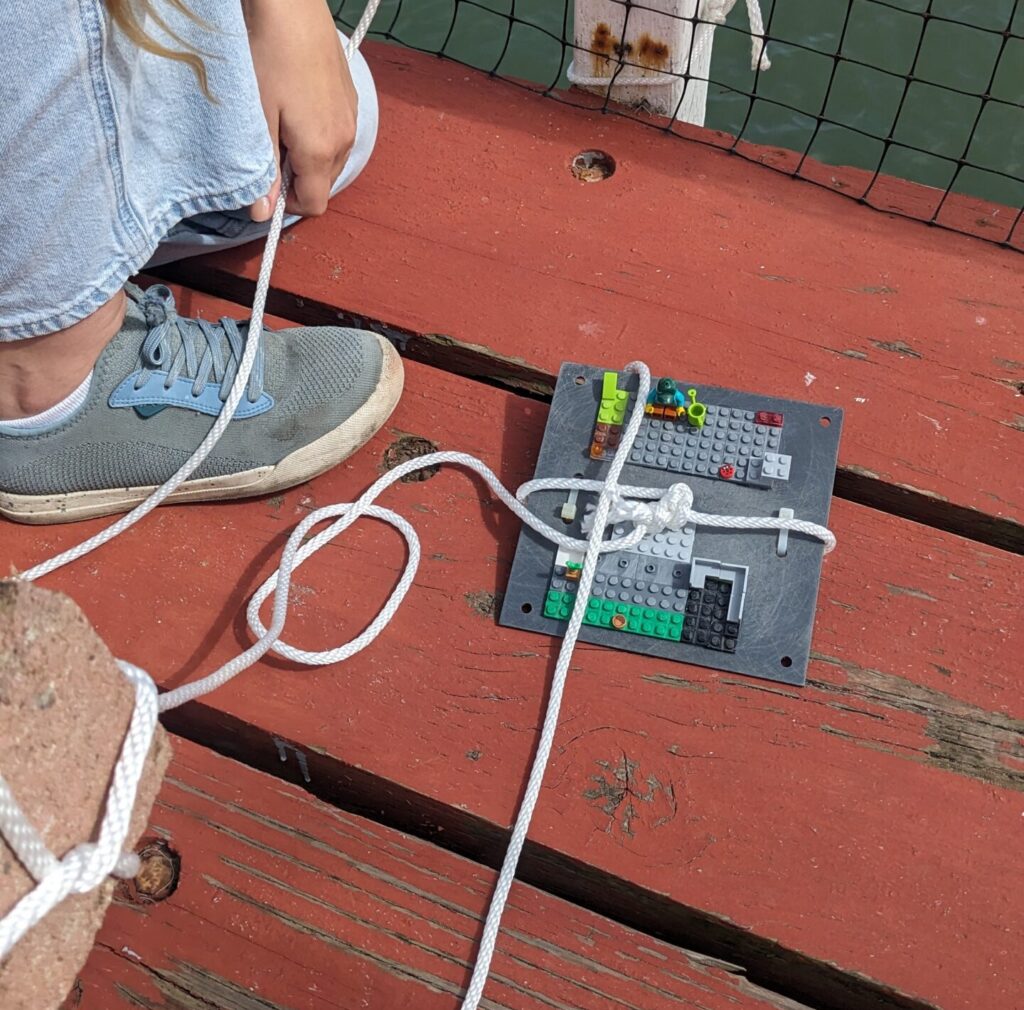
Julia’s Lego platform before being submerged.
What is the purpose or learning objective of this project for your course?
“My fouling plate project is for my Marine Invertebrate Zoology class at San Francisco State University taught by Professor Sarah Cohen. My professor has been doing this project for many years since it is a great learning experience to see what grows on your own fouling plate. It is also extremely interesting to see what is grown on different plates in different sites and to compare plates with my classmates.
For this project, I was given a blank fouling plate, a brick, lego pieces, and rope as materials for this project. Before deploying it into the water, I sanded my plate and super-glued Lego pieces onto it to provide more traction for the organisms that may grow on it.”
Why did you choose to do your project at the pier building?
“Firstly, the location is extremely convenient since I am in the office multiple days a week and it is easy for me to check on the plate. Secondly, I was extremely curious to see what might grow on and around our pier, especially since our pier, at quick glance, seems only to grow mussels, barnacles, and some sea lettuce.
Also, the tides have not aligned with our class schedule this semester, which has posed a challenge in organizing field trips to tide pools to observe the animals we study in class in their natural habitat. We have been able to do multiple field trips to piers to observe the fouling communities growing on the floating docks.
Finally, I figured once the semester ends, I could use the fouling plate for some of our education programs at work such as visitor center field trips, summer camp, and Oceans After School.”
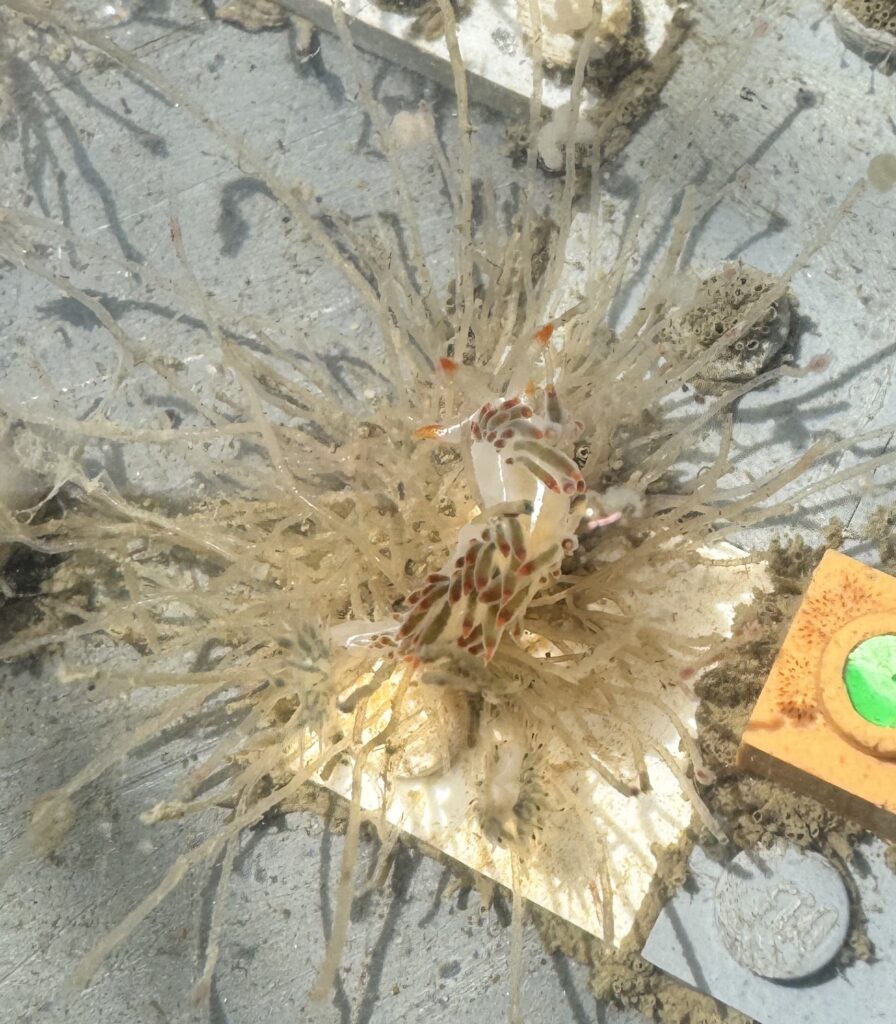
Nudibranch found on Julia’s panel after one month of being submerged in the bay.
What did you expect to find on your station?
“I fully expected to only grow barnacles, mussels, and sea lettuce since that is what grows on the pilings of the pier, but to my surprise, I grew much more than that.”
What did you actually find?
“After about one month in the water, my plate had Ectopleura [small, colonial hydroids], skeleton shrimp, small crustacean dwellings, and nudibranchs!”
Two of the nudibranch species on my plate have been identified as Cumanotus and Hermissenda. There were three Hermissenda that were about the size of a thumbnail and at least 15 smaller nudibranchs that were about the size of the tip of a pencil. I also found that several of the Ectopleura had nudibranch eggs on them. I was extremely surprised to find nudibranchs on my plate since I could not see any on the pilings of the pier.”

Ectopleura.
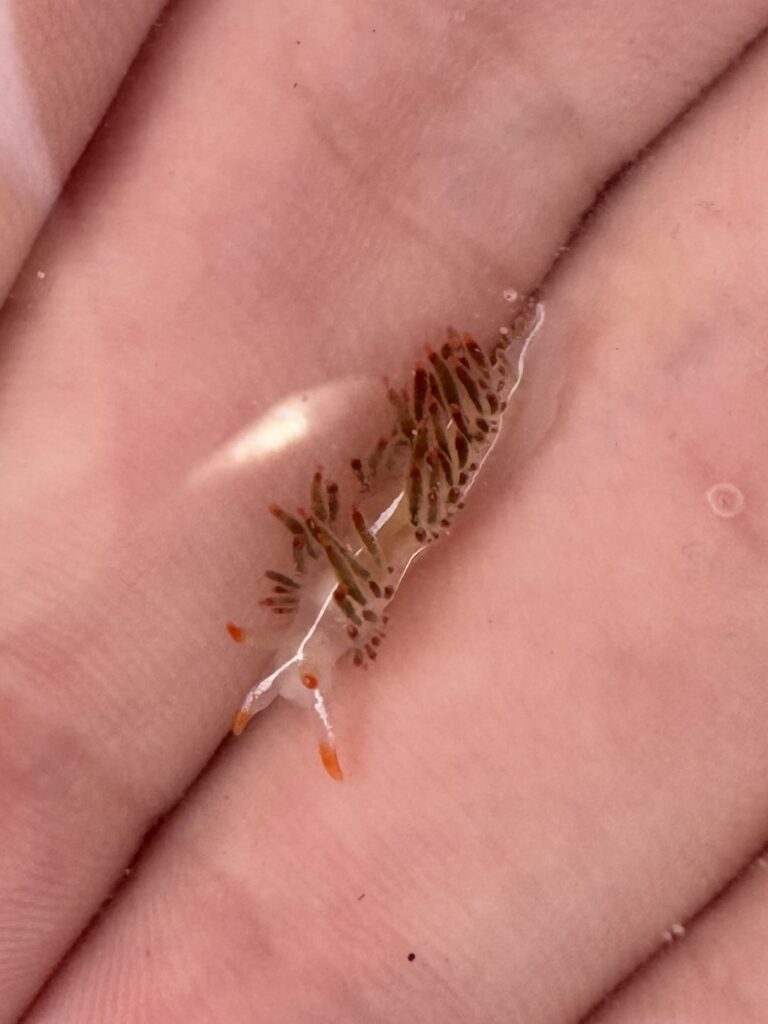
One of the nudibranchs found on Julia’s platform.
What has your project taught you?
“Before doing this project, I did not know anything about nudibranchs beyond seeing one in class that had accidentally hitched a ride on some kelp we collected. This project has made me fall in love with nudibranchs, and I cannot wait to learn more about them.”

Nudibranch eggs.
